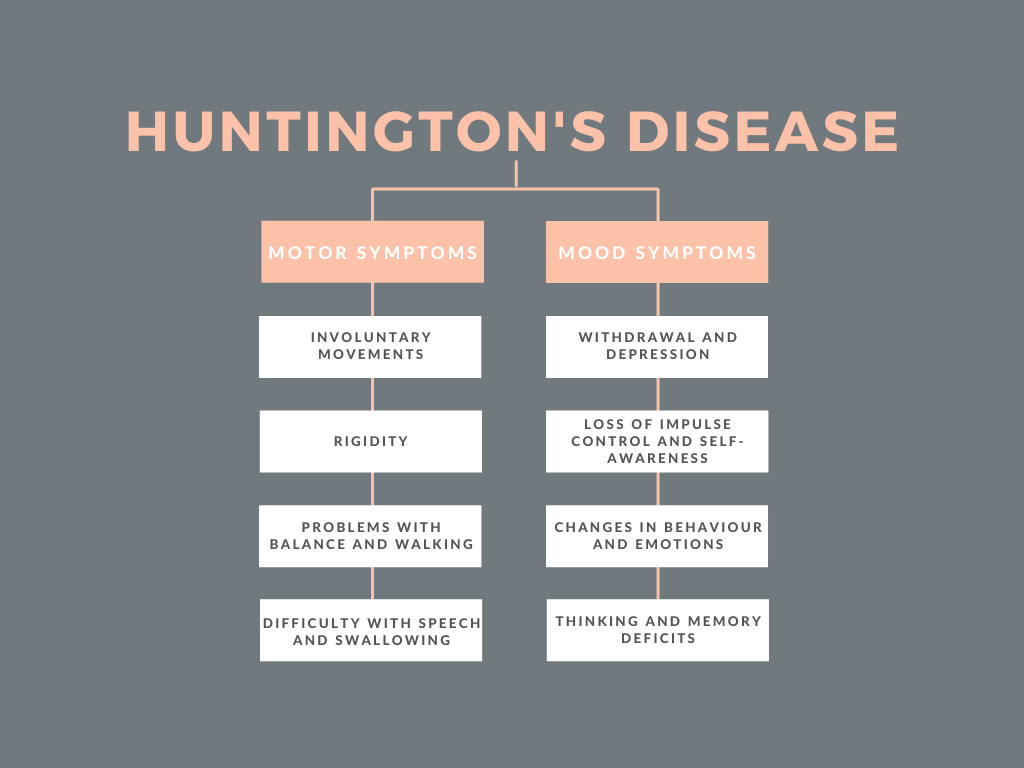There is a lot of variation in the symptoms of Huntington’s disease, and they can be broadly classified into either motor or mood. An individual with Huntington’s disease who primarily has experienced disordered movement will be placed into the ‘motor’ group, whereas an individual who has predominantly experienced mood disturbances will be in the ‘mood’ group. Research has shown that the cell loss in the brain matches the main type of symptoms that the patient has experienced.
The cerebellum is a region of the brain involved in coordination, fine-motor movement, posture, and balance, all of which have been shown to be affected in Huntington’s disease. The main type of neuron within the cerebellum are called Purkinje cells, which are necessary for movement. Neurological research of Huntington’s disease has predominantly focused on the basal ganglia and cortical areas in the brain, due to the damage and loss of cell in these regions. The role of the cerebellum in Huntington’s disease is currently unclear, as various studies have produced different findings.
The cerebellum sits underneath the brain at the back of the head. It has lots a tiny folds called folia that give it lots of space for housing neurons. Fun fact: despite its small size, the cerebellum contains over 50% of the total number of neurons in the whole human brain!!
A group of New Zealand researchers at the Centre for Brain Research set out to explain the role of the cerebellum in Huntington’s disease, and whether it varies between the motor and mood sub-groups. This research was made possible by the generous donation of human brain tissue from donors and their families to the Neurological Foundation Human Brain Bank. The Huntington’s brains were first analysed and separated into motor and mood sub-groups, and then comparisons between the cerebellum tissue of Huntington’s disease brains and normal brains was made.
The researchers found that there was a significant loss of Purkinje cells in the cerebellum of those within the motor sub-group of Huntington’s disease brains compared to the mood and normal brain groups. Interestingly, there was little difference in Purkinje cell numbers between the mood and normal brain groups. Given the role of the cerebellum in coordinating movement, the loss of these cells is likely to be contributing to the movement dysfunction present in the motor sub-group of Huntington’s disease.
This study provided evidence of the variation in the brain between the motor and mood sub-groups and that the cerebellum plays a significant role in Huntington’s disease. This highlights the need for future research to consider the cerebellum, the differences between motor and mood subtypes, and the importance of investigating Huntington’s disease within the framework of its symptoms in order to be able to identify the neurological changes of each individual more accurately, and to provide more individualised treatment options.
Original research article: Cerebellar degeneration correlates with motor symptoms in Huntington disease, Singh-Bains et al 2019. https://onlinelibrary.wiley.com/doi/full/10.1002/ana.25413
About the Author
Phoebe is a research technician at the Neurological Foundation Human Brain Bank at the Centre for Brain Research. She has studied neuroscience and has a specific interest in neurodegenerative disease. Phoebe is passionate about her work in the Human Brain Bank, and the exciting opportunities to support future research on a range of neurodegenerative diseases.















